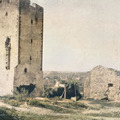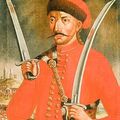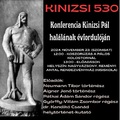The Kinizsi Grave Research
Who was Pál Kinizsi?
In the aftermath of the Battle of Breadfield (in Hungarian 'kenyérmezei csata'), DukeLőrinc Újlaki penned a letter to Mátyás Hunyadi, wherein he described Pál Kinizsi as a figure capable of transforming half the world into a graveyard—an embodiment of death's mercenary. This battle, which propelled Pál Kinizsi and his army into prominence, remains his most renowned feat. So, who exactly was Pál Kinizsi? Was he a medieval 'Terminator,' a veritable one-man army representing the Kingdom of Hungary? Or perhaps he exhibited qualities akin to a Maecenas, fostering the growth of culture?"
Please find the official event of Kinizsi Grave Research by clicking on this link.

The Kinizsi Grave Research in 2022
The Origins
Pál Kinizsi, an indomitable general, stands as one of the most revered heroes in Hungarian history. According to historical sources, Kinizsi was born around 1432 in Abaúj County, which is located in the northern region of present-day Hungary.
In recent research, it has been explored whether Pál Kinizsi's lineage had Hungarian roots or if he hailed from other nations such as the Serbs, Romanians, or Slovaks, all claiming him as their own valiant warrior.

The first depiction of Pál Kinizsi from the 18th century shows an idealized portrayal of him dressed as a Hungarian soldier from that era.
Regarding the matter of nationality, it is crucial to note that the question itself is an anachronism. In the 15th century, the emergence of the "Doctrine of the Holy Crown" (Szentkorona-tan), which preceded constitutional developments in the Kingdom of Hungary and set a precedent in Europe, did not differentiate based on nationalities. According to this doctrine, everyone was a subject of the Holy Crown of Hungary, and in a sense, a "Hungarian citizen," albeit anachronistically. This approach fostered a sense of "Hungarus-consciousness," wherein individuals identified with the state and the Crown rather than with a particular language or nation. Fragments of this ideology continued to play a decisive role in Hungarian history for centuries. By virtue of being a subject of the Holy Crown, Pál Kinizsi faithfully served the Kingdom of Hungary throughout his life, making it evident that he had the closest bond with Hungary. It can be confidently stated that nowadays Kinizsi would cheer for the success of the Hungarian national football team during an international match.

The statue of Pál Kinizsi by Imre Csikász, created in 1913-14.
The social status of the Kinizsi family is also a subject of debate. Contemporary accounts suggest that Kinizsi began his journey as a miller, while the historiography of the 19th century portrays him as the offspring of a modest noble family. It is possible that Kinizsi was indeed born into a financially struggling noble family, which would explain his involvement in the family mill. In the impoverished noble family's mill, there could be a need for physical labor, which the young and strong Kinizsi Pál could also perform.Therefore, the contradiction between these two statements can be reconciled.
Kinizsi, the Soldier
We are aware that Pál Kinizsi served in the Hungarian army from a young age. In 1467, he already appeared in a certificate, and the following year, he participated in the campaign in Moravia alongside his future father-in-law, Balázs Magyar.
From that point onwards, we encounter his name more frequently, indicating his ascent through the military ranks. In 1467, Mátyás (King Matthias Corvinus) appointed him as the Lord Lieutenant of Máramaros County, along with the administration of the salt mines. It is worth noting the significance of this latter position: Hungary was a dominant force in salt production during that era, comparable to the importance of oil today. This early dual appointment signifies that Kinizsi was not merely a common soldier, but a military leader who also held administrative roles. By the 1470s, he had become one of the most prominent figures in Hunyadi's Hungary.
In 1474, he assisted Mátyás, who was besieged in Boroszló (Wrocław/Breslau in present-day Poland) while fighting for the Czech crown. To liberate the king from the besieged castle, Kinizsi and his companions engaged in guerrilla warfare, sabotaging the supplies of the Polish-Czech army. The result of Kinizsi's fight was the surrender of the numerically superior besieging army, which sought peace with Mátyás.
In 1476, he conducted reconnaissance against the Turks towards Szabács (Šabac in present-day Serbia) and participated in the siege of the castle. The success achieved in Szabács was significant; it became a key point in Hungary's southern defense until 1521, as noted by Jenő Aigner. Additionally, the victory resulted in substantial financial support from the papacy for the Kingdom of Hungary. Subsequently, Kinizsi shifted his attention to the west, actively participating in campaigns against Austria.
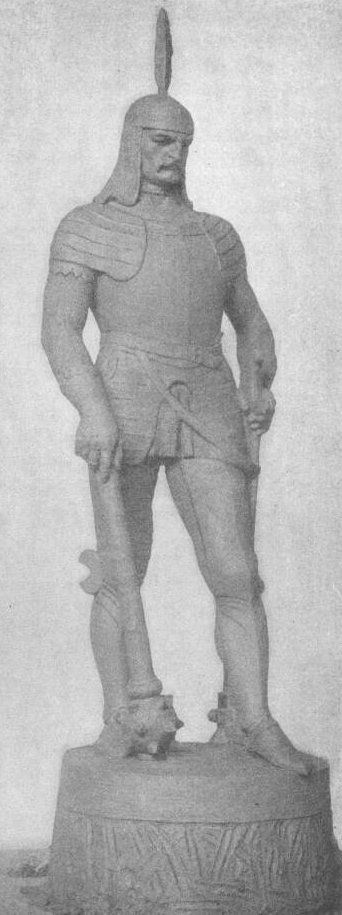
The sculpture of Pál Kinizsi, crafted by Kornél Sámuel
By the late 1470s, Kinizsi had become one of the most influential figures in the country. He held the position of captain of the southern borders and served as the Lord Lieutenant of Temes County, further bolstered by estates granted to him by Mátyás. The purpose of these property donations was to strengthen the region both financially and militarily with trusted individuals.
Kinizsi's most famous battle, known as the "Battle of Breadfield," took place in Transylvania on October 13, 1479. It was a monumental conflict in the Ottoman–Hungarian Wars, fought near the Saxon village of Alkenyér (also known as Zsibód in Hungarian, Unterbrodsdorf in German, and Șibot in Romanian), close to the Maros (Mureș) River.
The Hungarian army, led by Pál Kinizsi and István Báthori (Stephen V. Báthori from the Ecsed branch), faced a formidable Turkish force that had invaded Transylvania and ravaged every settlement in its path. The Ottomans enslaved thousands of people and left dozens of villages desolated. Báthori strategically waited until the Turkish forces became exhausted from their march and pillaging, attacking them on October 13. According to historical accounts, Pál Kinizsi did not initially participate in the battle. However, as soon as the fighting commenced, his co-leader, Báthori, fell from his horse, and the Ottomans nearly captured him. Thankfully, a nobleman named Antal Nagy whisked him away. Kinizsi then engaged the Ottomans with the Hungarian heavy cavalry and 900 Serbs under Jakšić, supported by numerous courtiers of the king.

Kinizsi's sword and chainmail
The leader of the Ottomans, Ali Bey, was forced to retreat. Kinizsi moved laterally to vigorously smash the Turkish center, and before long, Isa Bey also withdrew. The few Turks who survived the massacre fled into the mountains, where the majority were killed by local peasants. The hero of the battle was Pál Kinizsi, who turned the almost lost battle into a great victory.
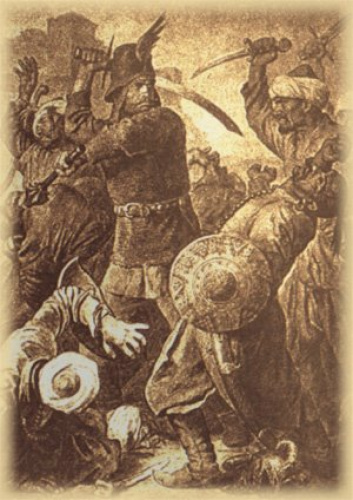
In the 1480s, Kinizsi looked forward to calmer times: he got married and took the daughter of his former superior, Balázs Magyar, Benigna Magyar. Perhaps thanks to his marriage and the more peaceful times, from the 1480s, Vázsonykő also had more time. He founded the Pauline monastery, then rebuilt the Vázsonykő castle in which Italian artists invited by Mátyás from Italy took part. He stayed more and more in the south, on the border of Bakony and the Balaton-Upland.
After the death of King Mathias, Kinizsi became a supporter of King Ulászló. His career as a general continued to rise: he carried the royal sword at the coronation ceremony, and in the 1493-94 round, Ulászló appointed him the country's third-ranking public law dignitary, Judge Royal. He did not come forward undeservedly because, after the external battles, he also played an active role in internal consolidation.
In 1492, Kinizsi's health deteriorated: he suffered a stroke, became paralyzed on one side, and his speech became difficult. However, this did not prevent him from acting against the Turks. He also fought his last campaign against the Ottomans. In late 1494, he convinced Ulászló to launch a campaign to the south against the Turks. During the Szendrő (now Smederevo, Serbia) campaign, Kinizsi suffered another stroke and took himself to the city of Szendrő, where he closed his eyes forever on November 29, 1494 (according to other sources, 24), shortly before the victory was won.
His body was laid to rest in the Pauline monastery in Vázsony. After the monastery was blown up in 1552, his Renaissance tomb was damaged, and in 1708, it was vandalized by grave robbers. His chainmail and sword, found in the grave, can currently be viewed in the Hungarian National Museum, but his remnants lie in an unmarked grave at the Church of St. Stephen in Nagyvázsony.
Kinizsi and Nagyvázsony
August 22, 1472, holds great significance in Kinizsi's life and is also celebrated as a special day in Nagyvázsony. It was on this day that the esteemed general became the lord of Vázsonykő, a place he later established as his stronghold. The enduring influence of Kinizsi is evident in the history of Nagyvázsony, as his 22-year rule continued to shape the region encompassing the former border of Veszprém and Zala counties. Under Kinizsi's leadership, the settlement gained the status of a market town (oppidum/mezőváros) in 1478, solidifying its significance within the county of Veszprém. This distinction persisted until the administrative reform of the late 19th century, underscoring the enduring impact of Kinizsi's legacy.
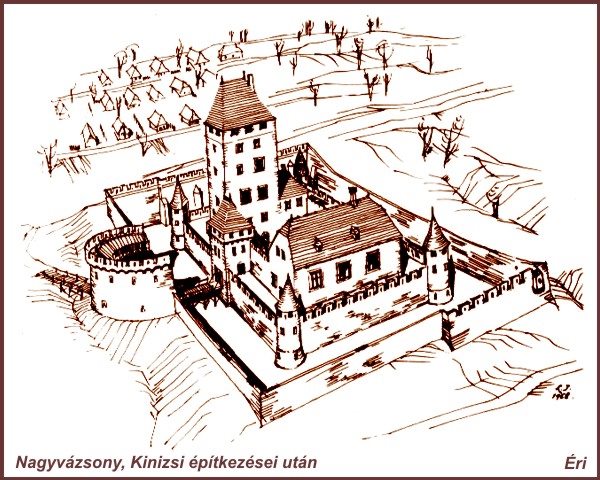
The Castle of Vázsonykő (formerly known as Nagyvázsony) after the reconstructions by Pál Kinizsi and/or Márk Horváth (drawn by István Éri)
Furthermore, thanks to Kinizsi, the settlement became a hub of cultural activity. He commissioned the construction of a Pauline monastery on the outskirts of the village, atop Szent Mihály Hill, using the spoils from the Battle of Breadfield and the ransom of Turkish prisoners. Notably, the Festetich, Czech, and Peer codices were penned within the walls of this Pauline monastery, and these codices hold linguistic significance in the Hungarian language.
The question naturally arises: why is Pál Kinizsi of importance to us? It is widely acknowledged that the 15th century stands as one of the most illustrious periods in Hungarian history. During this time, Hungary emerged as a regional empire, successfully fending off its adversaries and embarking on a path of both spiritual and financial growth. This remarkable development would have been difficult to envision without the steadfast support of the nobility, including one of its most influential leaders, Pál Kinizsi.
In this era, Kinizsi single-handedly defended Hungary and Europe from the south against the relentless onslaught of the Ottomans. Historians assert that a delicate balance existed between the Ottoman Empire and Hungary during this period, partly due to internal political strife within the Ottoman realm, which prevented the Turks from fully encroaching upon Hungarian soil. Pál Kinizsi himself stood as one of the significant factors tipping the scales in Hungary's favor. As the weight of his contributions waned, so too did the equilibrium. It is crucial to underscore the significance of his defense of the southern regions, as repelling the Turks during this era meant the preservation of the local (mostly Hungarian speaker) populace's very existence.
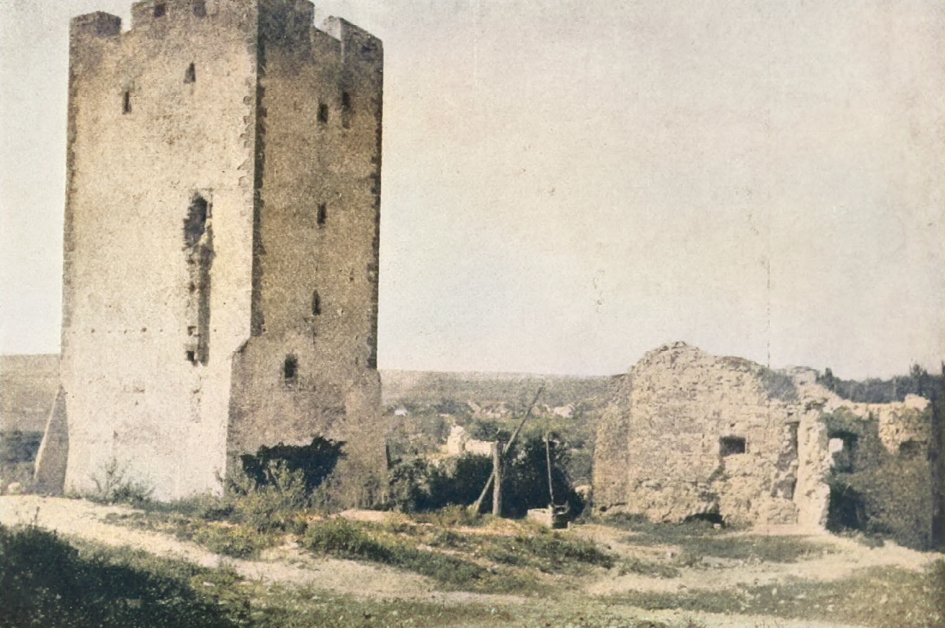
The early 20th-century depiction of the ruins of Vázsony Castle.
Furthermore, we must not overlook the financial patronage wielded by Kinizsi, which left an indelible mark on Hungarian culture. Consider the codices penned in the Pauline monastery or the architectural treasures found in Nagyvázsony, such as the Church of St. Stephen. Hence, who was Pál Kinizsi? He was an indomitable hero of the Hungarian Kingdom, a defender of Europe, and a patron of culture.
The Kinizsi Grave Research
The burial site of Pál Kinizsi has been the subject of archaeological investigation. Initially interred in the Pauline monastery in Vázsonykő (Nagyvázsony), Pál Kinizsi was laid to rest alongside his successor, Márk Horváth, who was the second husband of Benigna Magyar. Moreover, in 1708, the sepulchers of these two lords were desecrated by grave robbers, resulting in the removal of their remains from their original burial sites. The remnants of the Vázsonykő lords were subsequently laid to rest in an unmarked grave located within the medieval cemetery adjacent to the church.
 The reconstructed tomb of Pál Kinizsi, crafted by István Éri and János Sedlmayer.
The reconstructed tomb of Pál Kinizsi, crafted by István Éri and János Sedlmayer.
In addition to the quest for the Kinizsi remains, the medieval cemetery of Vázsonykő holds other intriguing possibilities. The ongoing excavation aims to verify the veracity of records suggesting that the gravestones of the Vezsenyi family are also interred around the church. Furthermore, the study of the cemetery may shed light on the true age of Nagyvázsony as a settlement.
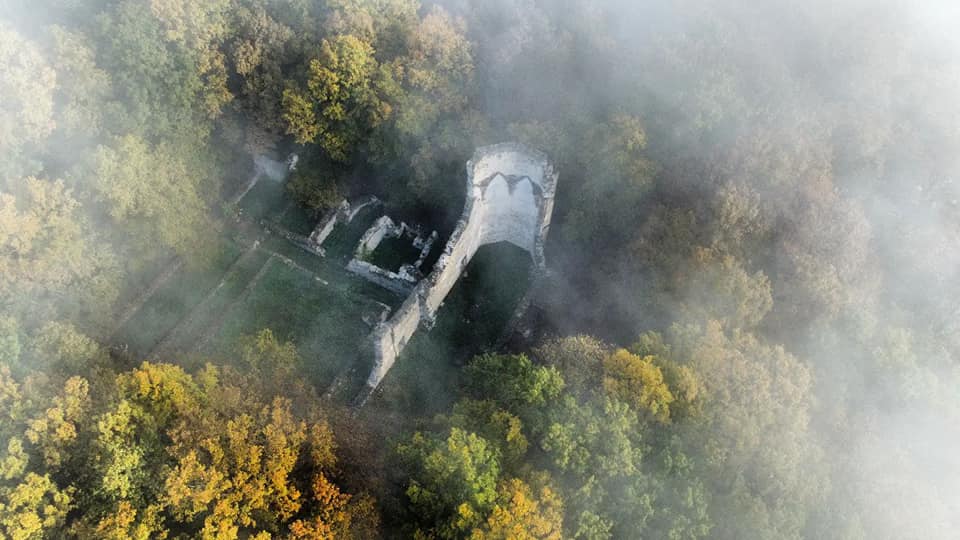
The mysterious Pauline Monastery of Nagyvázsony, where Kinizsi was originally buried.
After three centuries, archaeologists are now undertaking the first endeavor to locate the remains of Pál Kinizsi and his successor, Márk Horváth. The excavation commenced in August 2022, and the second phase is scheduled to occur from the 21st of August 2023 until the 23rd of September 2023. The archaeological research is led by Sándor Ádám Pátkai, an archaeologist at the Laczkó Dezső Múzeum of Veszprém, with Zsombor Győrffy-Villám, an archaeologist at the Janus Pannonius Museum in Pécs and a doctoral student at Pázmány Péter Catholic University, serving as the deputy leader. The initiative was spearheaded by Dr. Csanád Kandikó, a local historian who serves as the project leader.
The event is organized by the "Fekete Sereg" Youth Association led by Rita Kandikó.
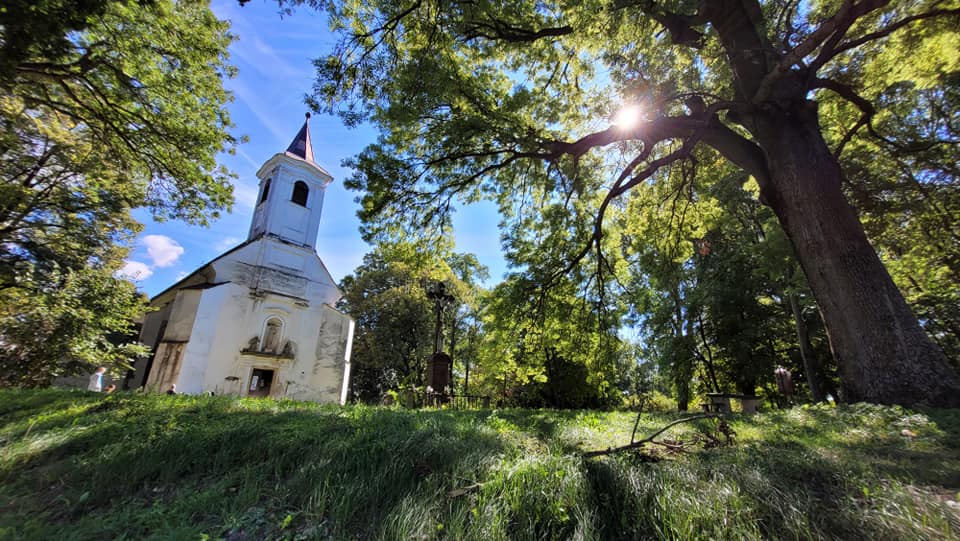
The St. Stephen's Church in Nagyvázsony, where the Kinizsi Grave Research is carried out
Author: Dr. Csanád Kandikó
project leader of Kinizsi Grave Research

